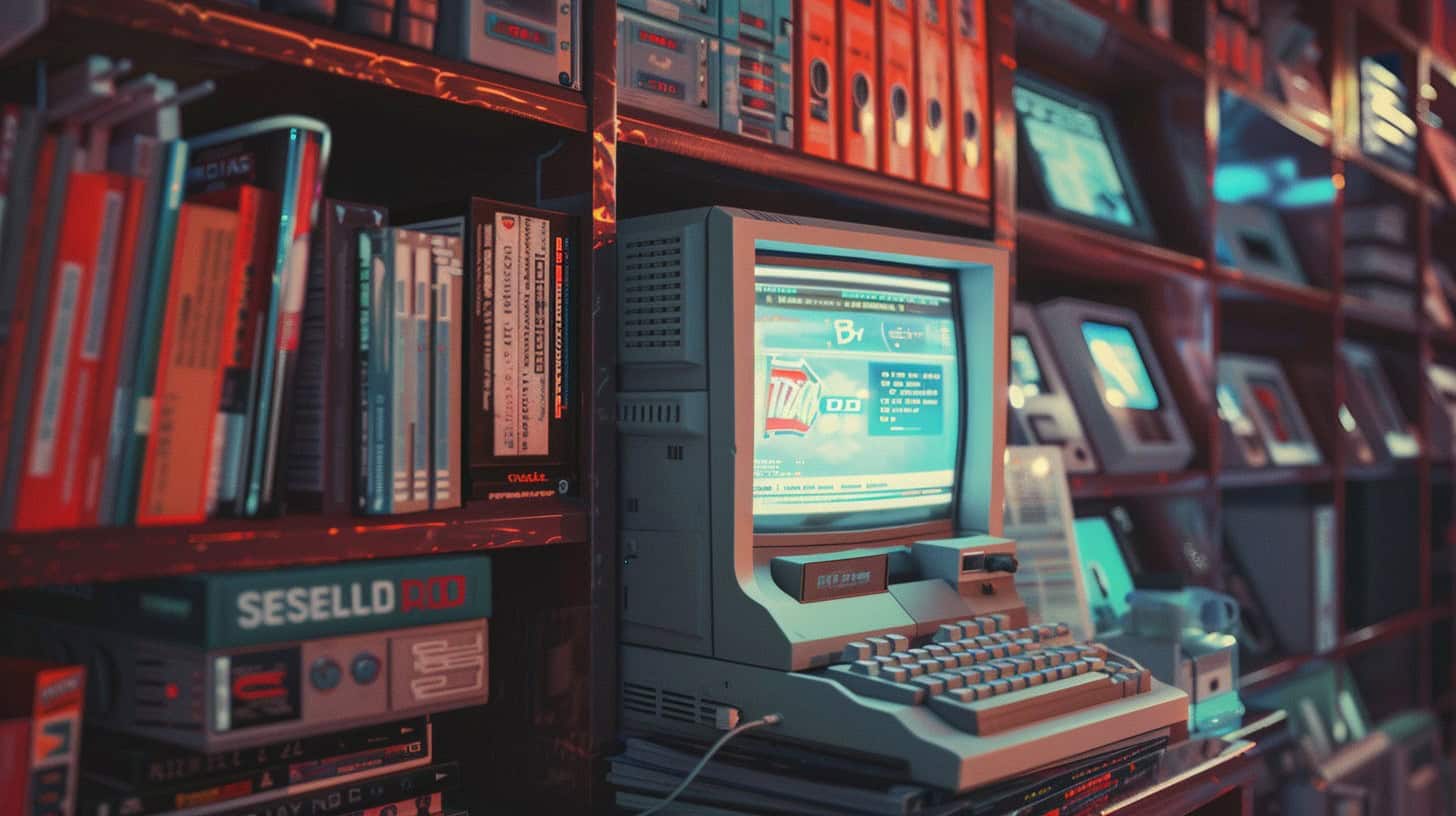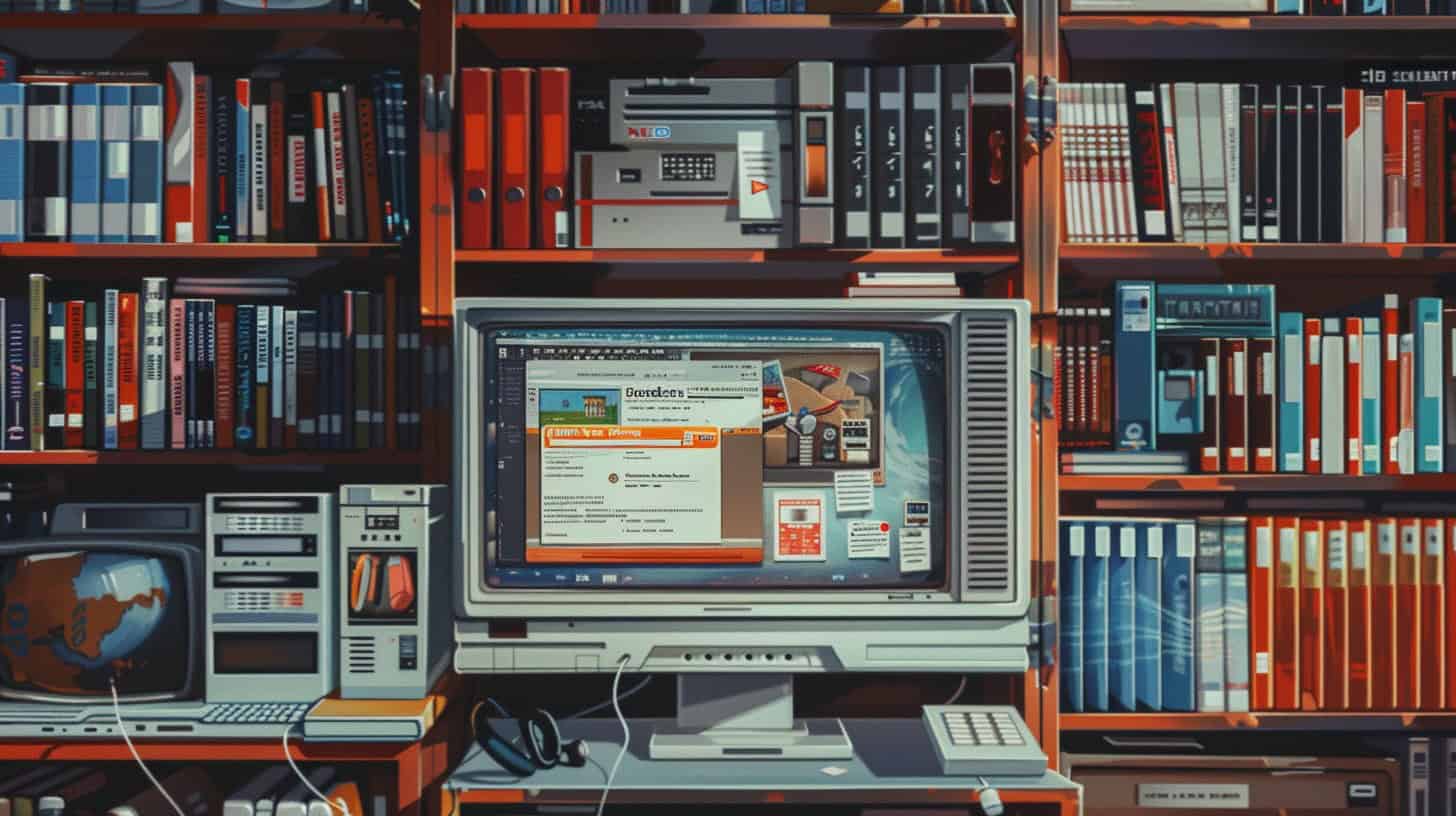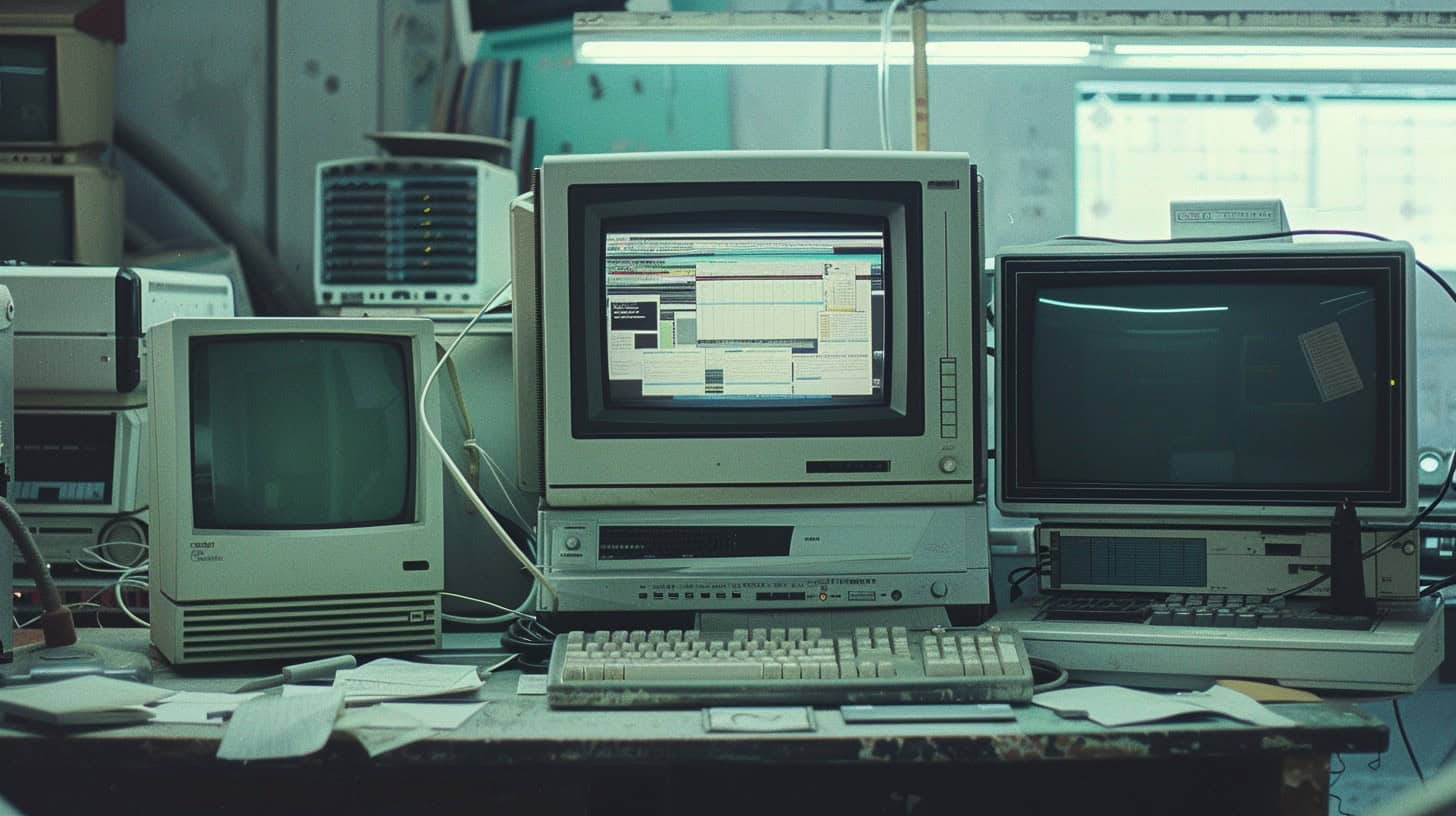Have you ever stumbled across an exciting software, but hesitated to purchase it upfront? Shareware might be the solution. Originating in the early 1980s, this distribution model allows users to try software for free before buying.
This article will guide you through understanding shareware—from trialware and freemium models to security risks. Discover how to safely enjoy these programs today!
Key Takeaways
Shareware lets you try software before buying it. Bob Wallace made it popular in the 1980s.
There are many types of shareware. These include trialware, freemium, adware, crippleware, donationware, nagware, and postcardware.
Using shareware has benefits like testing software to see if it meets your needs and giving feedback that can help improve the program.
But shareware also comes with risks like malware and privacy issues. It’s important to use antivirus programs and download from trusted sources to stay safe.
Comparing shareware and freeware shows differences such as cost and how you can use them. Freeware is completely free, while shareware might require a purchase after trying it out.
Table of Contents
Exploring the Concept of Shareware

Shareware came to life in the early 1980s, offering a new way for people to use software. Bob Wallace made this method popular with PC-Write, letting users try before they buy. This meant that anyone could get their hands on a program without paying upfront.
They could test it out, see if it fits their needs, and then decide whether to pay for its full capabilities or support.
As shareware evolved, it found its way into many areas of computing – from utility apps like WinRAR and CCleaner to games that kept us glued to our screens, such as Doom and Commander Keen.
These were not just limited to PCs; bulletin board systems allowed users everywhere to download shareware games and applications. And today? It’s easy to find examples across the web, even in unexpected places like casinohub.club reviews, where many games are free to try out – including online casino games.
This practice encourages exploring different software without immediate commitment, making technology accessible and inviting experimentation.
Varieties of Shareware

Shareware comes in many forms. Each type, from trial versions to ad-supported programs, offers a unique way to try before you buy.
Exploring Trialware
Trialware gives users a sneak peek of software before buying. This model limits usage time until the user decides to purchase. Think of game demos or trial versions of antivirus software.
It’s like test-driving a car but for software. Developers aim to win you over, hoping you’ll see value and buy the full version.
For example, many Windows 95 games came with trial periods, allowing players to experience parts of the game free of charge before committing to buy. Similarly, epic games and id software often release their new titles as trialware to attract gamers.
Trialware invites users on a journey from testing features freely available to unlocking its full potential through purchase.
Understanding Freemium Models
Freemium models give basic features at no cost, charging for advanced functions. This setup is ideal for gamers wanting to test new games before buying them. Unlike freeware, freemium users can access more by paying.
People love this option because it’s flexible. You start free and pay only if you want more. For example, many online service providers use freemium plans to attract users. They offer initial services free and then charge for premium features.
It’s a win-win; users try without risk, and providers gain potential customers ready to upgrade for better experiences.
Defining Adware
Adware shows ads on your screen to make money. It often comes hidden in free software downloads, tricking users into installing it without knowing. For example, while using a free photo editor or game, you might see pop-up ads.
These ads fund the software’s development and distribution but can annoy users with unwanted interruptions.
Some adware also tracks what you do online to show more targeted ads. This can raise privacy concerns because it collects data about websites visited, items clicked on, and even personal information in some cases.
Companies like Download.com use adware in their installers to support offering free downloads while earning revenue through advertisements. Users need clear options to decline these added programs during installation processes to avoid unintended adware installation.
Crippleware Explained
Crippleware makes some parts of software not work unless you pay. It’s like giving you a book but gluing some pages together. You can see the cover and even read a few pages, but to enjoy the whole story, you need to pay so they’ll unglue those pages.
This approach helps creators make money while users try their product.
Crippleware: A sneak peek into what could be yours, for a price.
Many programs on PCs use this model. They show off what they can do but keep the best features locked. Think of photo editing tools that won’t let you save in high resolution, or word processors that cap how many pages you can write.
This way, if users like what they see, they might decide it’s worth buying full access.
Benefits of Donationware
Donationware, like PC-File started by Jim Knopf in 1982, supports a simple idea: users decide if and what they want to donate. This model trusts users to value the software on their own terms.
Users enjoy full access without upfront costs, encouraging them to try the software thoroughly. If they find it useful, they can show appreciation through donations. This approach fosters a strong community around the software and promotes ongoing development funded directly by user gratitude.
This form of software distribution stands out because it breaks away from traditional sales models. Instead of locking features behind paywalls or interrupting the experience with ads as seen in adware or nagware, donationware keeps things clean and user-focused.
For developers, this means forming direct connections with their audience—a valuable exchange far beyond mere transactions. Users get great software while supporting its creators according to their ability or willingness to pay, making it a win-win situation for both parties involved.
Nagware Characteristics
Nagware constantly reminds you to buy a license. It pops up messages often, urging users to make a purchase. Each reminder interrupts your work, pushing you closer to buying the full version of the software application.
Nagware uses these nagscreens effectively, ensuring you don’t forget about their offer. Even as you use the program’s features, nagware ensures its reminders are hard to ignore.
This kind of software distribution model grabs attention in a way that can be annoying but is also hard to overlook. For instance, while working or browsing the internet on PC-talk platforms like Microsoft Windows or Compuserve, nagware makes itself known through frequent alerts and pop-ups.
These interruptions serve one purpose: to convince users that upgrading from the free or trial version is worth it for uninterrupted use.
The Idea of Postcardware
Moving from the intrusive nature of nagware, we shift focus to a more charming software type: postcardware. Aaron Giles coined postcardware to describe software that users enjoy for free.
In return, they send a postcard to the author. It’s simple–like saying thanks with a small token.
Postcardware turns ordinary users into part of a global community sharing appreciation through mail. Imagine getting postcards from around the world just because you shared your creation! This unique model spreads joy and connects creators and users on a personal level.
Comparing Shareware and Freeware

Sure, diving right into the comparison between shareware and freeware:
| Aspect | Shareware | Freeware |
|---|---|---|
| Cost | Free initially, then purchase required for full version or extended use | Completely free, no payment required at any stage |
| Usage Limitations | Limited features or usage period; full access post-purchase | Unlimited use with no restrictions |
| Distribution Methods | File sharing, on-premises setup, software as a service | Direct download from websites or through app stores |
| Try Before You Buy | Yes, allows evaluation of the software before making a purchase | No, since the software is already free |
| Main Objective | To demo and sell the full version of the software | To offer software without seeking financial gain |
This table summarizes the key differences between shareware and freeware, highlighting cost, usage limitations, distribution methods, the option to try before buying, and the main objective behind each software type. Shareware serves as a teaser, encouraging users to purchase after a trial period, while freeware provides unrestricted access without expecting payment.
Advantages of Using Shareware

Shareware lets users test software before buying, ensuring it fits their needs. This try-before-you-buy model boosts user confidence and reduces the risk of dissatisfaction. Shareware also fuels innovation among developers by allowing feedback during early stages, leading to improvements before final release.
Through platforms like VersionTracker and CNet’s Download.com, shareware developers gain visibility based on quality, user feedback, and download numbers. This exposure is vital for smaller developers, especially those creating games or specialized tools.
Choosing shareware means joining a community where feedback shapes future versions. Users influence the development of the software they use by reporting bugs or requesting features.
For developers, this interaction provides valuable insights into user needs and preferences, guiding refinement processes. Also, donation-based models encourage support for ongoing development without upfront costs, fostering a supportive ecosystem between users growing together with their chosen applications.
Security Concerns Associated with Shareware

Shareware can hide risks like malware and privacy issues. Be careful and keep reading to learn how to stay safe.
Recognizing Malware Risks
Malware often hides in shareware, tricking users into downloading harmful software. Proper antivirus tools are a must to catch these threats. They scan downloads for malicious payloads that can damage your computer or steal information.
Always update security programs to combat the latest viruses cybercriminals create.
Users must stay alert for signs of spyware and adware in shareware applications. These unwanted programs can track online activity or show annoying ads without permission. Watch out for slow computer performance or unexpected pop-ups, which may indicate malware presence.
Use reputable sources and read user reviews before downloading any shareware to reduce risks of installing advertising-supported software or potentially unwanted programs.
Assessing Privacy Risks
Shareware often comes with hidden risks to your privacy. For example, some shareware includes spyware that collects data without your permission. This can lead to data breaches. Using these programs on business or government networks makes the problem worse.
These networks have important information that attracts hackers.
To see if a program is safe, look for signs of reputable sources and read user reviews online. Check if the software has security features like code signing. This means the source is verified and safer to use.
Next, we will discuss strategies for staying safe from these risks.
Strategies for Safeguarding Against Shareware Risks

To stay safe with shareware, pick trusted sources and use strong security tools. Keep everything updated, too. Learn more to protect your tech!
Choosing Reputable Sources
To stay safe, pick official apps and cybersecurity software. Avoid ads that look sketchy and software bundles you didn’t ask for. Always choose downloads from trusted sites to keep away from outdated or harmful shareware.
Sites like Lifewire provide reliable information on where to get the real deal. Use well-known security tools to scan any download before running it on your computer.
Next, make sure your security programs are up-to-date and watch out for any odd behavior on your device — this helps catch threats early. Implementing these strategies makes using shareware smoother and keeps risks low.
Now, let’s talk about setting up security software properly.
Implementing Security Software
Installing security programs is a must to keep shareware safe. Tools like Kaspersky work well for this. They find and delete spyware and adware. Also, they save you from online scams.
Picking good antivirus software matters a lot here.
Good sources help too. Make sure the source of your shareware is safe and respected. This cuts down risks right away. Keep your software updated always for more safety.
Next up, we’ll talk about why updating regularly is key.
Ensuring Regular Updates and Monitoring
To stay safe, always keep shareware programs up-to-date. Developers release updates to fix bugs and close security holes. Use antivirus software to scan for malware risks often found in shareware, including demoware and trial software.
Regular monitoring helps catch problems early.
Choose sources you trust for downloading shareware. Look at web hosting mirror sites or bulletin board systems (BBS) that are well-known. Secure your computer with patches, like those seen in Windows XP Service Pack 2, which repair security vulnerabilities.
Credit card details and personal info stay safer this way.
People Also Ask
What exactly is shareware?
Shareware is copyrighted software you can use for free, usually with some features limited. It’s a way to try before you buy, often coming with a nag screen reminding you to purchase the full version.
How does freeware differ from shareware?
Freeware software is completely free, no cost attached; think of it as open-source or public domain software. Shareware, on the other hand, might ask for payment after trial or limit features until you pay.
Can I modify shareware code?
Nope! Unlike open-source software where the source code is available for tweaking and sharing improvements, shareware keeps its computer code under wraps—strictly proprietary.
Why do some sharewares include a nag screen?
A nag screen serves as a constant reminder to buy the full version of the software package—it nags you until you click through or enter that debit info to escape its clutches.
Are there risks in downloading shareware?
Yes, always be cautious! While many are legit ways to demo video games or business applications (software as a service – SaaS), scammers may also patch bugs into what seems like harmless diskettes or downloadable files.
How has copyright law impacted shareware distribution?
Copyrighted since inception by creators like Andrew Fluegelman and Nelson Ford—the Kroz series comes to mind—shareware operates within legal frameworks, ensuring creators get their due while users enjoy trial access… All governed by end-user license agreements (EULAs) and sometimes GPL licenses for those patched versions floating around.


